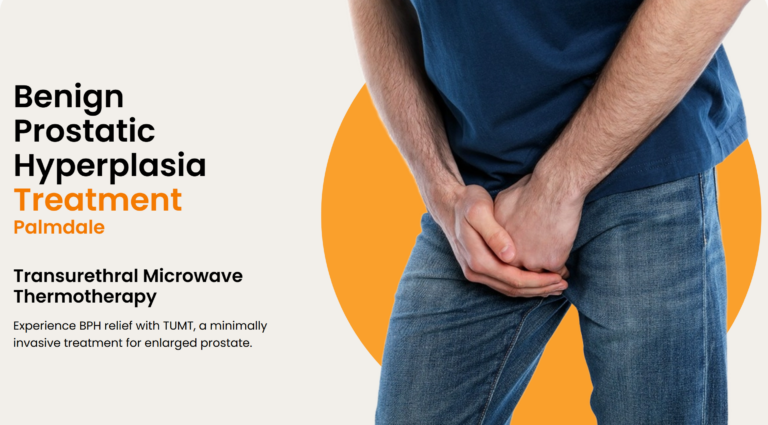-
-
-
Transurethral Microwave Thermotherapy (TUMT)
-
Experience relief from BPH with Transurethral Microwave Thermotherapy (TUMT). This innovative procedure enhances urine flow by eliminating excess prostate tissue.
Transurethral Microwave Thermotherapy (TUMT) is a minimally invasive procedure designed to alleviate urinary symptoms caused by benign prostatic hyperplasia (BPH). This treatment employs microwave energy to target and destroy excess prostate tissue, thereby improving urine flow and reducing associated symptoms.
Overview of the Procedure
1. Preparation:
-
Candidate Evaluation: TUMT is typically recommended for men with moderate-sized prostates (30 to 100 milliliters) who prefer a non-surgical option or have contraindications for surgery. A thorough evaluation by a healthcare provider will assess prostate size, shape, and overall health status.
-
Pre-Procedure Instructions: Patients are advised to refrain from eating, drinking, or smoking for at least six hours prior to the procedure. Any prescribed medications should be discussed with the doctor, as some may need to be paused.
2. Procedure Steps:
-
Anesthesia: The procedure is usually performed under local anesthesia, sometimes supplemented with intravenous sedation.
-
Insertion of Catheter: A specially designed urinary catheter containing a microwave antenna is inserted through the urethra into the prostate. A balloon within the catheter helps maintain its position.
-
Microwave Energy Application: Once in place, the antenna emits microwave energy that heats the prostate tissue. This heating process leads to coagulation and destruction of excess tissue without significantly affecting surrounding healthy tissue. The temperatures used can exceed 70°C (158°F) to ensure effective ablation of prostatic cells
-
Duration: The entire procedure typically lasts about 30 to 60 minutes.
Post-Procedure Care
1. Recovery:
After the procedure, patients are monitored briefly before being discharged. Most can return home within a few hours but should arrange for someone else to drive them due to the effects of anesthesia.
-
Patients may experience mild discomfort, blood in urine, or difficulty urinating initially. A catheter is often left in place for several days to aid urine drainage while healing occurs.
2. Follow-Up:
-
Patients are advised on post-operative care, including hydration and avoiding heavy lifting or strenuous activities for several weeks. Sexual activity should also be avoided for about 2-3 weeks post-procedure.
-
Monitoring for complications such as urinary tract infections or severe abdominal pain is crucial. If symptoms persist or worsen, patients should contact their healthcare provider immediately.
Risks and Considerations
While TUMT is generally considered safe, potential risks include:
Intensified urinary symptoms post-procedure.
Temporary urinary retention requiring catheterization.
Risk of urinary tract infections if catheters are used for extended periods.
Possible need for retreatment if symptoms do not improve adequately.
-
-
-
-

-
-
Dr. Eugene Rajaratnam
MD, FACS, ABAARM
-
Medical Director, Urology Specialist
-
-
-
-
-
Find Locations
-
Address
38921 Trade Center Dr Palmdale CA 93551
Tel
Schedule
Mo
- 9:00 AM
- 4:00 PM
Tu
- 9:00 AM
- 4:00 PM
We
- 9:00 AM
- 4:00 PM
Th
- 9:00 AM
- 4:00 PM
Fr
- 9:00 AM
- 4:00 PM
Sa
--Su
--
-


